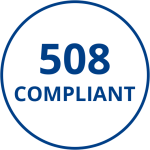NASA’s Educator Resource Center webpages are no longer available. NASA is restructuring its STEM-related activities in order to streamline and maximize the services it can offer within allocated fiscal resources. As a result, many activities are being retired as they complete their natural period of performance.
If you are interested in obtaining NASA STEM resource materials, please visit the A-Z List of NASA Publications or the A-Z List of NASA Websites for quick links to NASA’s STEM resources for educators and students. The index allows users to locate top level sites for NASA related topics, education pages for NASA missions, print materials, and other hard-to-find pages.
NASA’s Field Centers are located across the United States. If you are interested in activities, events, programs, and workshops that are available in your region, please contact the NASA STEM Engagement office located near you.
NASA remains committed to providing meaningful STEM resources for educators and learners. A wide variety of materials, activities, video clips and other related information is available on line. Please visit the NASA STEM Engagement homepage for more information or to search for such resources: http://www.nasa.gov/stem.

How can you help learners understand what scientific questions are being asked in the first place? Ask students to pick a NASA discovery. Invite them to trace the unpredictable pathway scientists followed to ask the right questions that began the quest for answers. What would your students discover?
Find out more with the activities outlined in this new blog post at: nasawavelength.org/blog/ever-wondered!
NASAWavelength.org is your pathway into a reviewed collection of NASA Earth and space science resources for educators of all levels – from elementary to college, to out-of-school programs.
Use NASAWavelength.org to quickly and easily locate resources, create custom lists of resources, and share the resources you discover with others through social media and email.
Educators can now receive college credit or renew their teaching license through Ashland University by participating in any of the NASA Educator Resource Center (ERC) local professional development workshops.
Click here to contact the representative at Ashland University for more information.
The Global Learning and Observations to Benefit the Environment (GLOBE) program is a worldwide hands-on, primary and secondary school-based science and education program. GLOBE’s vision promotes and supports students, teachers and scientists to collaborate on inquiry-based investigations of the environment and the Earth system working in close partnership with NASA, NOAA and NSF Earth System Science Projects (ESSP’s) in study and research about the dynamics of Earth’s environment.
Click here for more information about The GLOBE Program.
The GLOBE Program has a newly established Distinguished Educator Fellowship for both U. S. and international K-12 educators. If you are a GLOBE teacher please check out this opportunity; or if you know of any GLOBE teachers that might be interested, please forward this information to them.
Applications are due mid-December, and the Fellowship also includes a stipend.
Click here for more information.
The ASM Materials Education Foundation supports educators involved in materials, science, and engineering through a free 40-hour materials science workshop where teachers can exchange ideas and use innovative tools for successful learning activities.
Click here for additional information.

The NASA Glenn DIME and WING programs are geared up for this school year’s competitions for student teams to design their own microgravity experiments or tests. There are two components; one for high school aged student teams and one for student teams in grades 6-9. Teams whose proposals are selected in the competition build their own experiment which will be operated in the NASA Glenn 2.2 Second Drop Tower.
Click here for additional information.
Dropping In a Microgravity Environment or DIME is for high school aged teams with eight available selected positions. The top four teams are invited to visit NASA Glenn in Cleveland, Ohio with travel expenses provided for four students and an adult advisor for two days at NASA. The other four selected teams build their experiment and send it to NASA for the NASA staff to operate it in the drop tower.
What If No Gravity? or WING is for student teams in grades 6-9 where selected teams build their experiment and send it to NASA for the NASA staff to operate it in the drop tower.
In all cases, data is supplied to the teams and the experiment is returned to each team. Each team then prepares a final report based on the experiment operations and data analysis.
More information about the program and instructions to prepare a proposal are contained on the DIME / WING website at:
spaceflightsystems.grc.nasa.gov/DIME.html
Videos from past experiments are available on YouTube.
www.youtube.com/user/DIME10NASA#p/a
The Student Spaceflight Experiments Program (SSEP) is a National Science, Technology, Engineering, and Mathematics (STEM) Education Initiative for Grades 5-16 to inspire the next generation of America’s scientists and engineers.
Applications are open for the Student Spaceflight Experiments Program (SSEP) Seventh Flight Opportunity – SSEP Mission 5 to the International Space Station!
Click here for additional information.
FirstEnergy is offering $1,000 STEM Classroom Grants for projects and teacher professional-development initiatives focusing on Science, Technology, Engineering and Mathematics (STEM). Educators (Pre-kindergarten through Grade 12) and youth-group leaders in FirstEnergy service area communities and facilities locations are encouraged to apply.
Click here for additional information.
Girl Scouts of the USA recently released Space Science badges for girls in Kindergarten through Fifth grade—and in 2019, they will offer Space Science badges for Sixth- through Twelfth-grade girls. The earning of each badge includes an “observing” component, with troops encouraged to reach out to local astronomy clubs, so be aware that troop leaders may contact you to attend one of your events. You can share your love of the sky as you help girls unleash their G.I.R.L. (Go-getter, Innovator, Risk-taker, Leader)™ potential! Learn about the Girl Scout Difference and how the Girl Scout Leadership Experience helps girls thrive.
Click here for additional information.
Ohio Space Grant Consortium
22800 Cedar Point Road | Cleveland, OH 44142
Phone: (440) 962-3099 | Fax: (440) 962-3200 | E-mail: osgc@oai.org

© All Rights Reserved